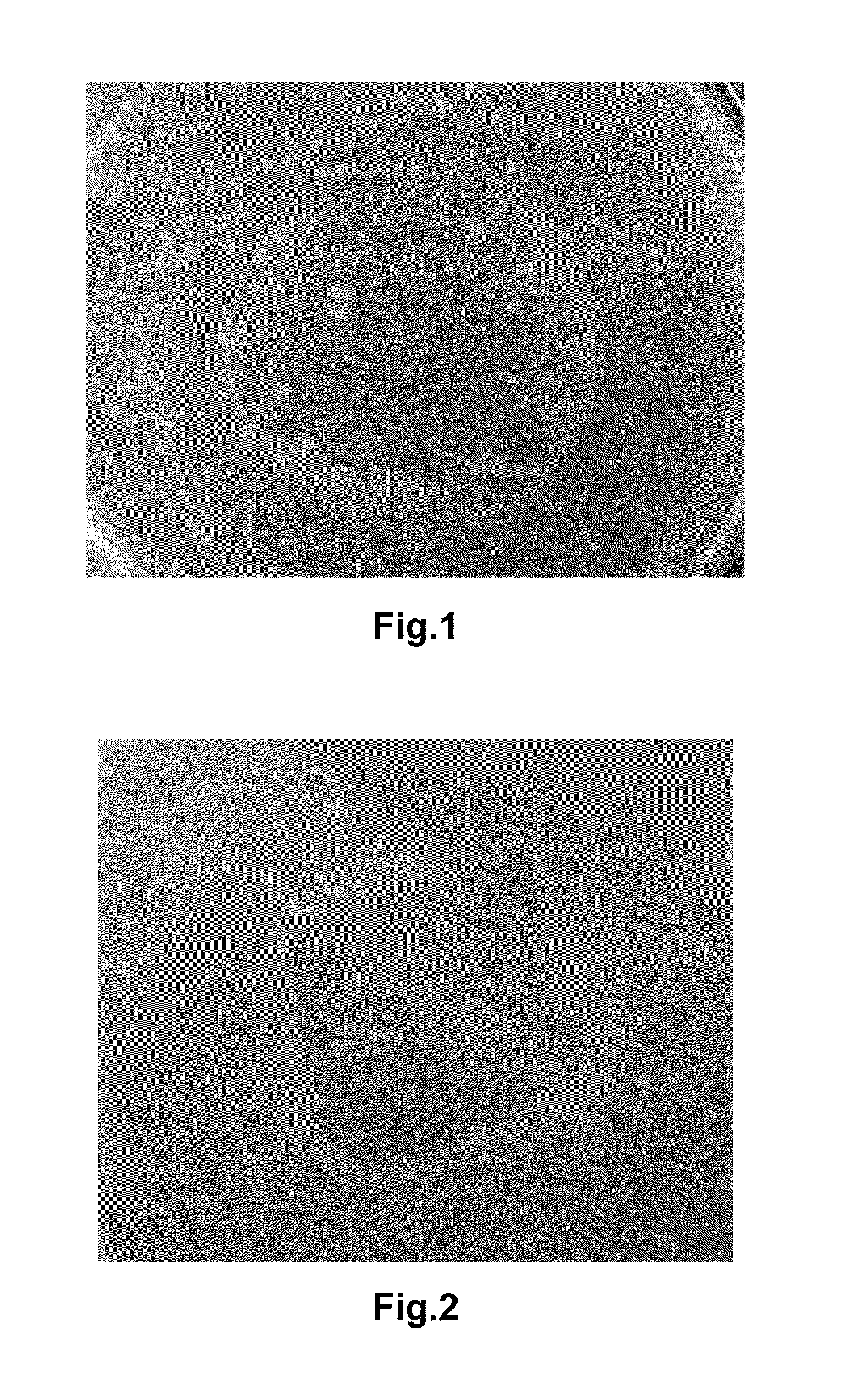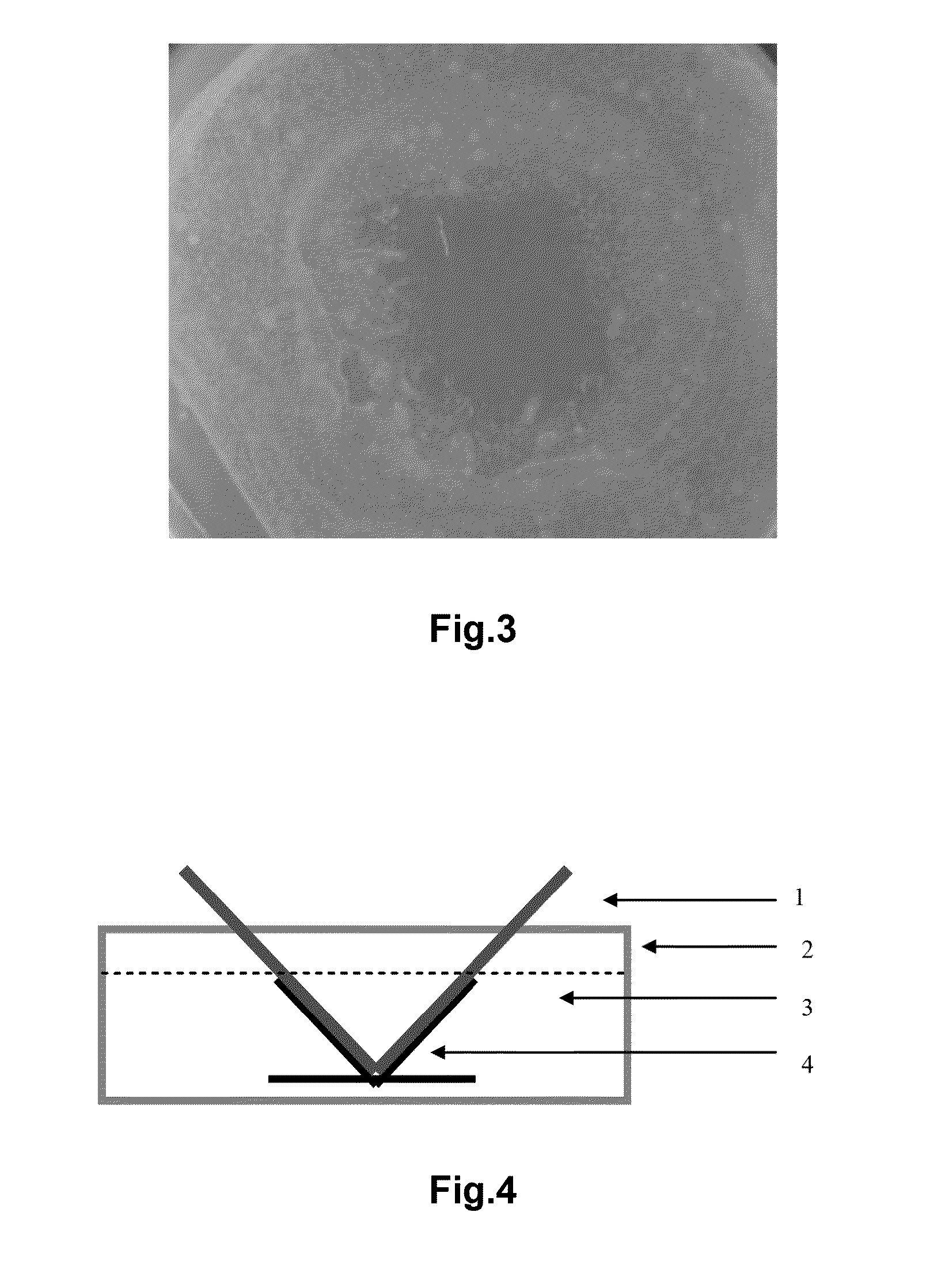Wound dressing with bacteriostasis and hygroscopicity
- Summary
- Abstract
- Description
- Claims
- Application Information
AI Technical Summary
Benefits of technology
Problems solved by technology
Method used
Image
Examples
example 1
[0037]Raw material: Chitosan fiber: linear density 2.0 dtex, fiber length 50 mm. The fiber contains 1% by weight of surfactant (Tween 20). The fiber's absorbency to the solution containing 8.298 g / l of sodium chloride and 0.368 g / l of calcium chloride dehydrate (solution A) is over 110%. Chemically modified cellulose fiber: linear density 1.4 dtex, fiber length 38 mm. The fiber is modified by carboxymethylation reaction. The fiber's absorbency of a solution containing 8.298 g / l of sodium chloride and 0.368 g / l of calcium chloride dehydrate (solution A) is 2200%.
[0038]100 g of chitosan fiber and 900 g of chemically modified cellulose fiber are blended and opened manually for 5 mins, then fed into a single cylinder card (Cuarnicard). The fibers are further blended into the hopper and the card, then opened and formed into a web. The web is crosslapped and needled into a nonwoven with a base weight of 130 gsm.
[0039]Cut the fabric into 10×10 cm, pack the dressing into pouches then steril...
example 2
[0041]In order to observe the bacteriostatic performance of the wound dressing in Example 1, approximately 0.25 mL of Staphylococcus aureus at a concentration of 10E6-10E7 cfu / mL was evenly coated on a Petri dish. Then the dressing obtained from Example 1 was cut into 2×2 cm and placed into the Petri dish. The Petri dish was then cultured at temperature of 37° C., and observed for the growth of bacteria on the plate. FIG. 1 shows the area underneath the dressing at 1 days.
[0042]From FIG. 1, it can be seen that the area underneath of the dressing is less cloudy than the rest of the Petri dish, indicating less growth of bacteria underneath of the dressing.
example 3
[0043]Raw material: Acylated Chitosan fiber: linear density 2.0 dtex, fiber length 50 mm. The fiber contains 1% by weight of surfactant (Tween 20). The fiber's absorbency to the solution containing 8.298 g / l of sodium chloride and 0.368 g / l of calcium chloride dehydrate (solution A) is over 1500%. Chemically modified cellulose fiber: linear density 1.7 dtex, fiber length 50 mm. The fiber is modified by carboxymethylation reaction. The fiber's absorbency of the solution containing 8.298 g / l of sodium chloride and 0.368 g / l of calcium chloride dehydrate (solution A) is 1500%.
[0044]Take 400 g of chitosan fiber and submerse the fiber in ethanol solution for 30 minutes. Squeeze the fiber to dry then place the fiber into a 0.1 g / m1 succinic anhydride solution (894 g of succinic anhydride in 8940 ml of ethanol). Heat to 70° C. for 40 mins. Squeeze the fiber to dry then wash the fiber in an ethanol solution, followed by submersing the fiber in an ethanol solution containing Tween 20. The fi...
PUM
| Property | Measurement | Unit |
|---|---|---|
| Fraction | aaaaa | aaaaa |
| Fraction | aaaaa | aaaaa |
| Percent by mass | aaaaa | aaaaa |
Abstract
Description
Claims
Application Information
 Login to View More
Login to View More - R&D
- Intellectual Property
- Life Sciences
- Materials
- Tech Scout
- Unparalleled Data Quality
- Higher Quality Content
- 60% Fewer Hallucinations
Browse by: Latest US Patents, China's latest patents, Technical Efficacy Thesaurus, Application Domain, Technology Topic, Popular Technical Reports.
© 2025 PatSnap. All rights reserved.Legal|Privacy policy|Modern Slavery Act Transparency Statement|Sitemap|About US| Contact US: help@patsnap.com


